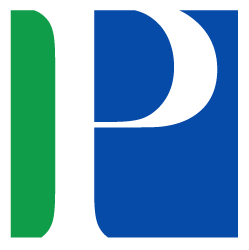The capacity approach in analyzing the local actors profiles in their organization around the tourism projects in the province of Guelmim
Abstract
Aim: Individual and collective competencies emerge from the capability approach, with the freedom of choice aspect and actors’ organisation giving rise to them in accordance with their will and the particularity of their territory. All the interests and influences on the behaviour and the dynamics of the local actors that we wish to highlight through this article are reflected in the importance of creating a collective dynamic around the projects.
Method: The tourism project’s relationships among various actors with competing goals were studied using a qualitative approach. This connection is analysed for its externalities (both positive and negative) and as a driving territory behind local development initiatives in the Guelmims province.
Findings: We have three profiles based on the interviews: the active steering group, the active facilitator, and the passive actor. A qualitative analysis of the actors provides a better understanding of both than trying to standardise actors’ behaviour and thoughts with quantitative analysis tools.
Implications/Novel Contribution: These studies highlight the importance of human capital in rural areas, particularly in the Saharan provinces of Morocco, like Guelmim, where it has been traditionally overlooked.
References
Ambikai, D., & Ishan, Z. (2016). Comparative analysis of law on tort of deviant behaviors in Malaysia and India. Journal of Advances in Humanities and Social Sciences, 2(4), 243-249. doi:https://doi.org/10.20474/jahss-2.4.5
Bernoux, P. (2014). Sociology of organizations. Toronto, Canada: Points.
Boujrouf, S. (2014). Heritage resources and development of tourist territories in the high atlas and Southern regions of Morocco. Journal of Alpine Research, 2(12), 102-112. doi:https://doi.org/10.4000/rga.2311
Cousin, S., & Bertrand, R. (2009). Sociology of tourism. Paris, France: La DÃl’couverte.
Crozier, M. F., & Friedberg, E. (1992). The actor and the system: the constraints of collective action. New York, NY: Sage Publication.
Dubois, J., Brouillet, A. S., Bakhshi, P., & Duray, S. C. (2008). Rethinking collective action, an approach by capabilities. Paris, France: L’Harmattan.
Friedberg, E. (1997). Power and the rule. Paris, France: Points.
Gumuchian, H. (2003). The actors, these forgotten of the territory. New York, NY: Sage Publication.
Kamran, M. R., & Zhao, Z. (2016). Millennium & financial development goals: Economic indicators perspective of South Asian countries. International Journal of Humanities, Arts and Social Sciences, 2(4), 133-151. doi:https://doi.org/10.20469/ijhss.2.20003-4
Lavilles Jr, H. L., & Robles, A. C. M. O. (2017). TeachersâA˘ Z soft skills proficiency level and school performance ´ of selected schools in Sultan Kudarat division. Journal of Advances in Humanities and Social Sciences, 3(1), 10-28. doi:https://doi.org/10.20474/jahss-3.1.2
Leberre, M. (1995). Encyclopedia of geography. Paris, France: Economica.
Marchat, H. (2010). The project leader’s kit. Paris, France: D’organization.
Massicotte, G. (2008). Science of the territory: Perspectives quebecoises. Quebec, Canada: Presses of the University of Quebec.
Panzironi, F., & Gelber, K. (2012). The capability approach: Development practice and public policy in the Asia-Pacific region. London, UK: Routledge.
Paulino, H., Gatpandan, M. F., Rosas, & Daniel, D. J. R. (2017). Microsoft office specialist and microsoft technology associate certification: An integrated curriculum for technical skills validation. Journal of Advanced Research in Social Sciences and Humanities, 2(5), 277-283. doi:https://doi.org/10.26500/jarssh-02-2017-0501
Teik, G., E, & Aman, R. C. (2015). Prevalence of self-hurt behaviour among Chinese adolescents in Malaysia. International Journal of Humanities, Arts and Social Sciences, 1(2), 108-113. doi:https://doi.org/10.20469/ijhss.20008-2
Zaoual, H. (2011). Solidarity economy and local development, towards a democracy of proximity. Paris, France: Harmattan.

This work is licensed under a Creative Commons Attribution-NonCommercial 4.0 International License.











.png)









